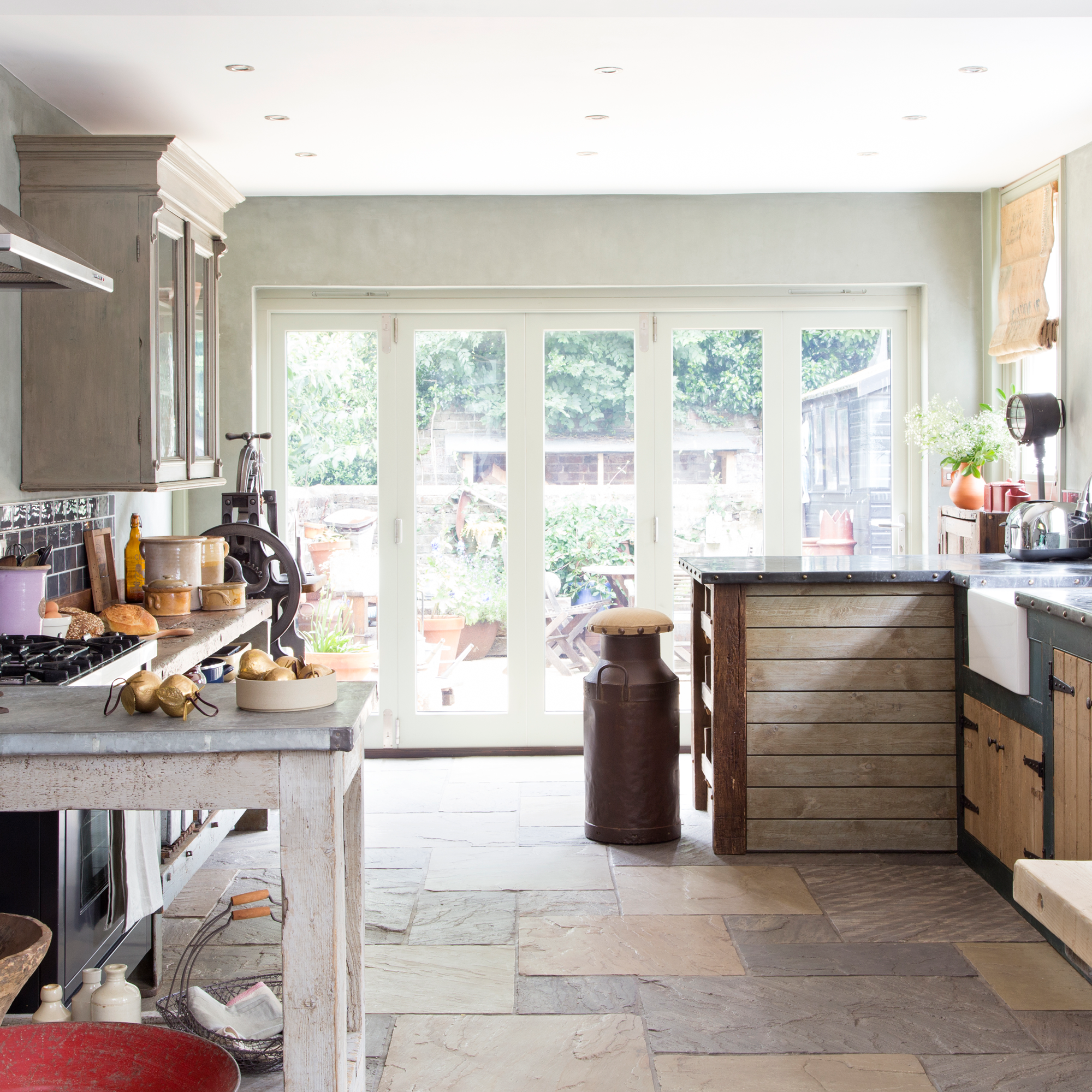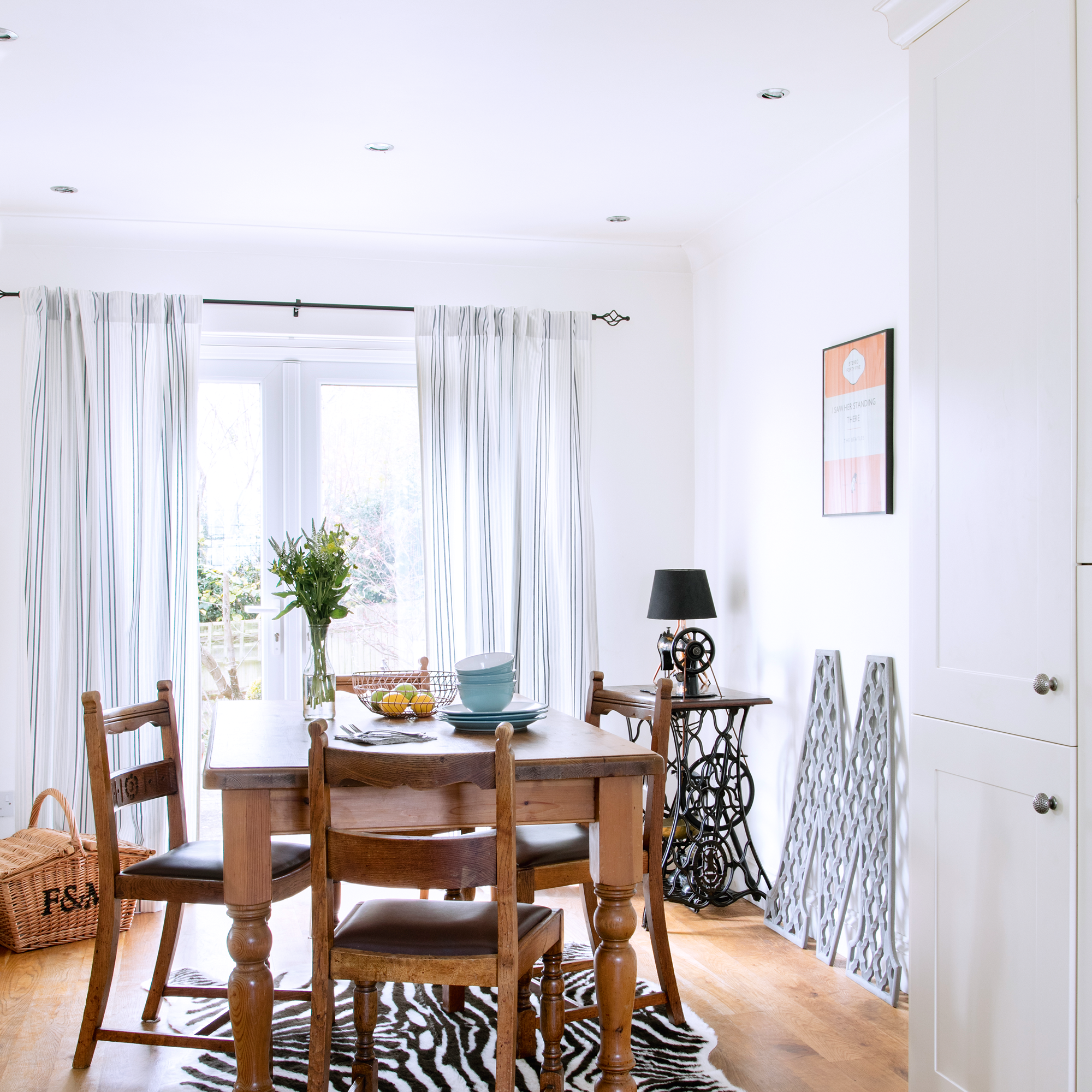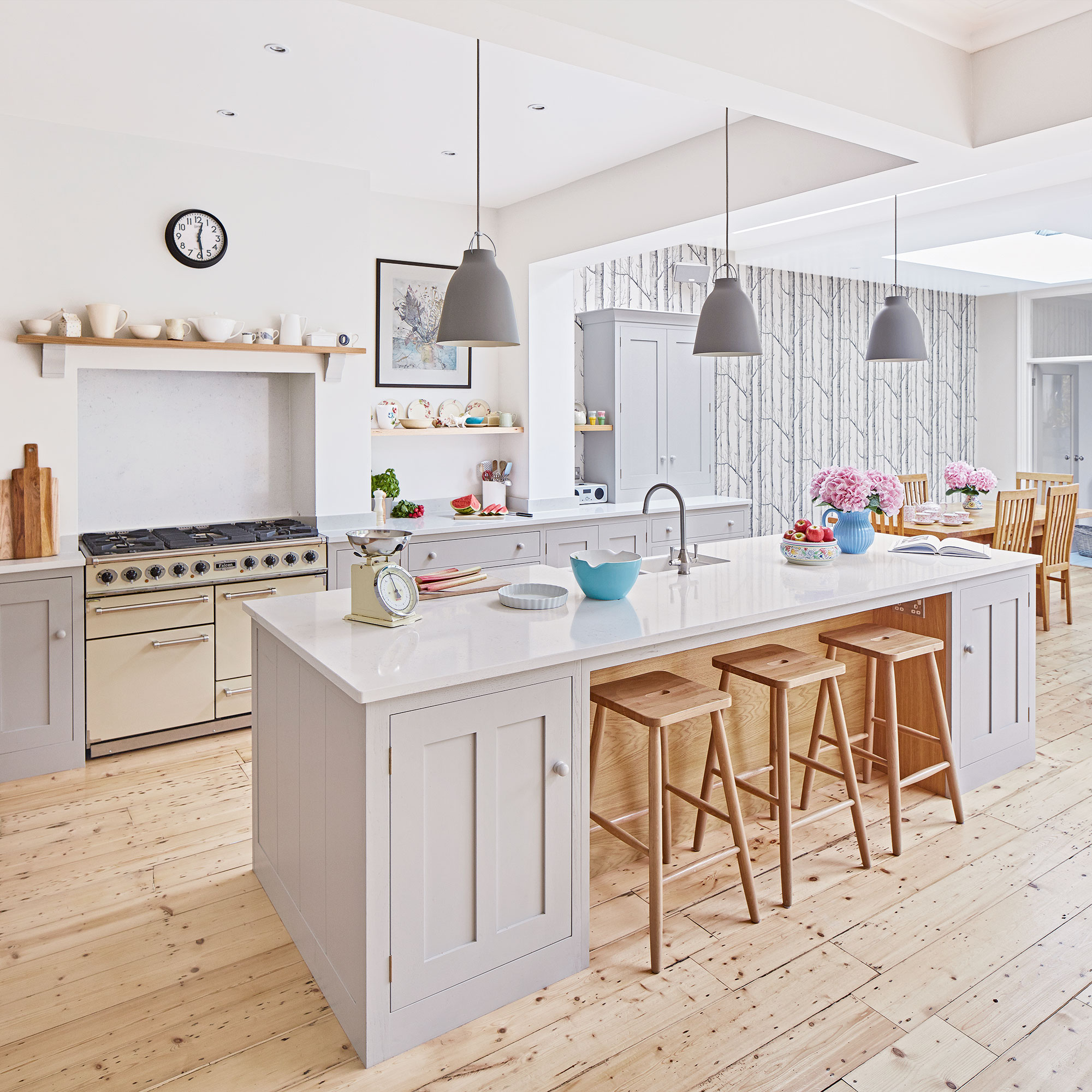How many spotlights do I need? How to calculate the perfect number
We've asked experts how to find the right number of spotlights to illuminate your space

Working out how many spotlights you need is a daunting task, as it's really not something you'd want to go back and change. You certainly don't want to end up with an airport runway situation, nor do you want kitchen lighting so dim you can barely see your chopping board.
Even those of us who can't stand having the 'big light' on can appreciate just how incredibly useful spotlights are when it comes to task lighting. If you're renovating or building your home and wondering 'how many spotlights do I need?' we've gone straight to the experts for answers.
How many spotlights do I need?
First of all, there's no one-size-fits-all solution for your spotlight configuration. However, professionals in lighting and interior design have a few rules of thumb to help them find a sweet spot that ensures light is evenly distributed.
Ideally, your kitchen lighting ideas will mean that when walking into the room, the lighting isn't actually the first thing you notice. You're not wondering where the lights are or feeling overwhelmed by a space flooded with too much light. Here's how to work out how many you'll need.

1. Follow the one-metre rule
The first and easiest option is to simply place your spotlights one metre apart in all directions. Place them one metre from where the ceiling meets the wall to avoid shadows. Measuring this out will give you the right number of spotlights.
Luxury Interior Designer Sanel Konyar from Interior Kollection stands by the one-metre rule, whether you're planning small kitchen lighting ideas or lighting a large space. 'Too many spotlights can look ugly,' comments Sanel. 'In kitchens, bathrooms, or workspaces, we generally require more light for practical reasons.'
Sanel adds that putting spotlights on different circuits will mean you can take advantage of different ambient lighting once the cooking is done. When you're prepping food or getting ready in the morning, you do need a high level of light so you can see what you're doing.
Sign up to our newsletter for style inspiration, real homes, project and garden advice and shopping know-how

2. Divide your ceiling height by 2
David Amos, Founder of Amos Lighting + Home has a simple rule of thumb for calculating how many spotlights you need. You can apply this to any room. 'When fitting the lights, it’s always recommended to divide your ceiling height by two to allow you the space needed between each downlight,' explains David.
So if your ceilings are a standard height of 2.4m, you'll want to space the spotlights 1.2m apart. If you're lucky enough to have high ceilings at around 2.6m, they'll need to be spaced 1.3m apart.
This is a handy guide to help you install enough lights to illuminate your room without it feeling overpowering. Follow David's technique and you'll end up with a grid of evenly spaced spotlights in keeping with the scale of your room.
Although, that's not to say spotlights have to be arranged in a perfectly symmetrical grid. The shape and angles of the room may mean that's not possible, or you might have skylights that would get in the way. Above all else, spotlights are functional and should give you light where you need it.

3. Work out the number of lumens you need
You could also do some maths to work out how many spotlights you'll need, based on lumens and Lux. A lumen is a unit that measures the light level that a source produces. Lux = the light emitted by one lumen over one square metre.
Different rooms need different levels of lumens – a kitchen needs 150-200 Lux for ambient lighting and 250-400 for task lighting. Multiply the Lux by the area. So, for example, to work out the ambient lighting in a kitchen that's 12 metres squared, you could calculate: 200 Lux x 12 square metres = 2,400 lumens.
Then use enough spotlights to add up to 2,400 lumens. A standard LED spotlight will emit between 300 and 500 lumens, so you'd need around six spotlights for this space.

4. Adapt to your space
As we said, there's no one-size-fits-all. Various factors – including your kitchen colour schemes – have an impact on how bright a room feels. How many spotlights you need totally depends on your space, the natural light that it receives, and the overall effect that you desire, says Lee Lovett.
'Having said that, there are some main points to consider,' the founder of The Soho Lighting Company adds. 'Firstly, when installing spotlights, many people think they can only be installed in a line or a uniform pattern. and while this works well in some spaces, spotlights can also be used sparingly within the room to light up alcoves and in areas that would benefit from task lighting such as kitchen counters,' Lee explains.
Lee also points out that it's important to consider the Colour Render Index (CRI level) when choosing spotlights. A CRI level of 100 is equivalent to natural daylight and the closer a downlight or spotlight is to 100 CRI the better clarity of vision you will have for tasks where lighting is of paramount importance.

5. Consider zones
Ann Marie Cousins, Founder of AMC Design says the key is to think about how you'll be using the space. Because this will impact how and where you choose to install your lights.
'When designing a kitchen, you will want to make sure that there is adequate lighting around the cooking and preparation areas to ensure you can safely see what you are doing,' says Ann Marie. 'Whereas in a bathroom, by combining spotlights with dimmer switches, you can add atmosphere and soft light suitable for a relaxing bath, or turn them up for gloomy mornings when you need to get going.'
Ann Marie says that when it comes to installation, think about what you want to light. So over workspaces such as a kitchen island, you need spotlights evenly distributed across the working area. But in other areas, you can use directional spotlights to accentuate features or artwork to draw attention to them, she explains.
Adding LED strip lighting under kitchen cupboards or on the top of them gives you more options for layering light. As does adding the soft glow of a table lamp. If you're renovating an open-plan dining space, avoid spotlights directly over seating to prevent spotlights from glaring into your eyes while seated.

When thinking about how to plan your kitchen lighting we'd always recommend putting spotlights on a dimmer so you can adjust light levels whether you're chopping onions or having a dinner party. You can also get spotlights that can be changed from cool to warm light, so this takes some of the stress out of getting brightness and tone just right.
Our kitchens are multifunctional spaces and the lighting needs to accommodate different activities, from cooking to working and socialising. So it's always recommended to have three kinds of lighting in any space. Task lighting, ambient lighting, and accent lighting, giving you options to create the perfect level of light.
How many downlights can you have on one switch?
The number of lights you can connect to a single switch will depend on the wattage of the lights and the rating of the trip switches in your electrical panel. Your qualified electrical installer will calculate the correct ratings for your light fittings, cables, and trip switches.
How far apart should spotlights be placed?
The easiest and most advisable method is to place your spotlights one metre away from the edge of the ceiling. And then place subsequent lights one metre away from each other, says lighting expert John McAllister from MyJobQuote. If your room can't accommodate a metre of space between each ceiling light, or your room is at anawkward angle, then divide your ceiling height by two, he says.
Measure your ceiling height in metres and divide this by two to give you the right amount of space between each light. But always start the lights one metre away from the edge to avoid shadows as these can make a space feel smaller.

Millie Hurst was Senior Content Editor at Ideal Home from 2020-2022, and is now Section Editor at Homes & Gardens. Before stepping into the world of interiors, she worked as a Senior SEO Editor for News UK in both London and New York. You can usually find her looking up trending terms and finding real-life budget makeovers our readers love. Millie came up with the website's daily dupes article which gives readers ways to curate a stylish home for less.